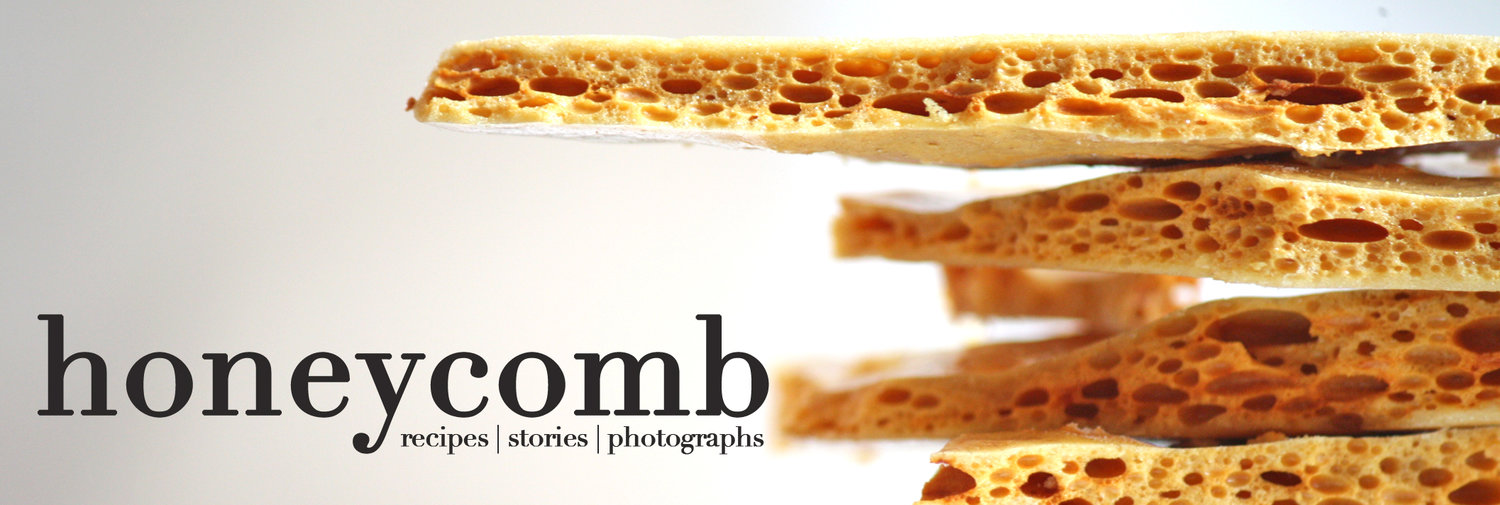Brown Butter Reese's Rice Crispy Treats
Until this past week I never fully ever understood how glad I am to be a part of a food blogging community. There are thousands of us out there all hoping that someone may be reading the words and viewing the pictures we put so much time and care into. And though only the select few get the limelight, the celebrity status, and the cookbook offers, we all do it nonetheless, to share the things that we are passionate about to anyone who may care to learn. I love to stumble upon a new blog, and get treated with a good read and recipe while I’m at it. And of course I have my favorites too, the ones I return to without fail every few days to see what’s new. The one’s that I rely on to inspire my breakfasts lunches, diners, and desserts. It’s a little bizarre sometimes to think of how much I know and care about these other people’s lives yet they haven’t the slightest idea I exist. But I guess that’s the beauty of it. I can read another’s blog and it’s like silent conversation with a friend I’ve never met. Creepy? Slightly.
But then last week, I discovered that within this community of foodies, whether we are acquaintances or strangers, there is support and love and unending compassion. I learned the unspoken truth that in this community, were are all friends. When I found out about the death of Jennie Perillo’s husband, I of course was saddened. And although I cannot say that I can understand how it feels, my heart went out to her. Turns out so did the hearts of thousands of others. She asked that on Friday, we all made her husband’s favorite peanut butter pie and share it with someone we love. Suddenly, the Internet exploded with these peanut butter confections.
Foodgawker and Tastespotting’s front pages were seas of peanut beige and chocolate brown, Food Network dedicated its recipe of the day to the pie, and Twitter created an “apieformikey” hashtag. It was a phenomenal display of support in a way I never imagined possible.

I did not discover this request to make the pie until the day it was supposed to commence, but coincidentally, a chocolate peanut butter dessert was already on my to-bake list. My family and I were invited to a friend’s house for dinner that evening and I decided to make our host a dessert she’s been begging me to recreate since it’s first appearance in May. So knowing that I would be gone at school soon, I made her my Brown Butter Reese’s Rice Crispy Treats before I left. Yes I know they do not even slightly resemble a pie, but wasn’t the point of “A Pie for Mikey” to show our loved ones that we care for them, to spend time with our friends and enjoy each other’s company and good food? So Rice Crispy Treats for Mikey it became.

They are simple, delicious, easy to share, and easy to enjoy. So show someone you care for them with a batch of these delights, letting each snap crackle and pop ring out “I Love You”
Brown Butter Reese's Rice Crispy Treats
These come from my Flour Bakery Cookbook and have become a favorite go-to recipe for a quick dessert to share. Though they require a little extra work than the classic recipe, the effort turns them from a ho-hum Rice Crispy Treat into a sophisticated, adult version of this childhood favorite. They get a nutty richness from deeply browned butter, a floral aroma from fresh vanilla beans, an unbelievable moistness from ungodly amounts of butter, and a nostalgic and fun twist from loads of mini Reese’s folded in at the end.
Ingredients
1 cup (2 sticks) unsalted butter
½ vanilla bean
2 X 10 oz bags marshmallows
½ tsp. salt
9 cups crispy rice cereal
1 bag mini Reese’s
Butter a 13X9 inch baking dish and put the crispy rice cereal in a VERY large mixing bowl. In a large saucepan overlow heat, melt the butter. Split you vanilla bean lengthwise, scrape out the seeds, and place them into the melting butter. Once the butter finises melting, it will begin to bubble and crackle. Watch over your pan, swirling the contents occasionally. After about 5-6 minutes, the bubbling will suddenly stop and the butter will instantly turn from golden to amber colored.
At this point it is fully browned so add the marshmallows and salt. Stir the mixture over the low heat with a wooden spoon until the marshmallows are completely melted and incorperated into the butter.
Quickly remove from the heat and scrape this into the bowl of cereal. Give everything a big mix until coated evenly, dump in the mini Reese’s and fold them so they are evenly distributed. Transer everything to the baking dish and press down on top to fill all of the space and make the surface even. Let cool at room temperature for an hour and then cut into 24 squares.



























